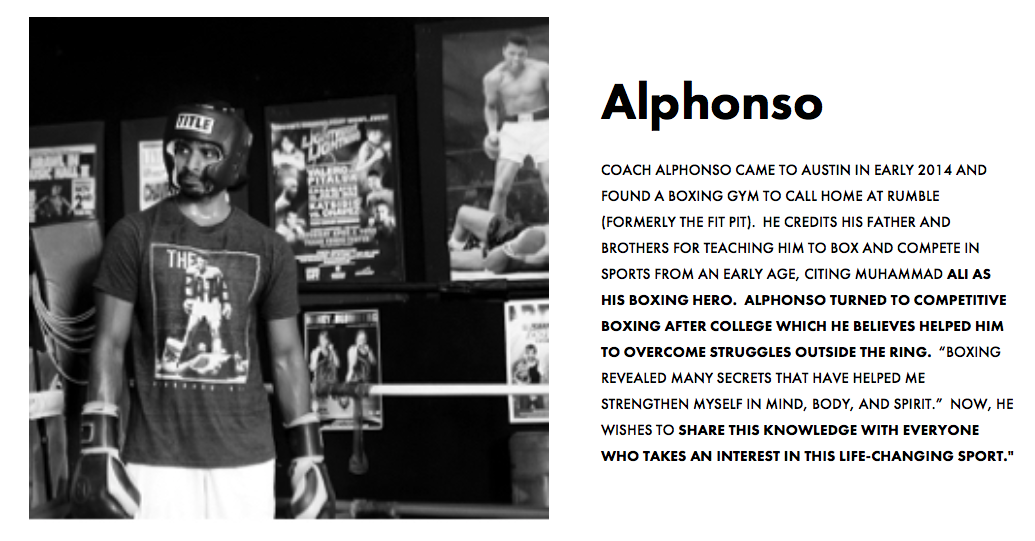As 2017 drew to a close, my favorite boxing gym, The Fit Pit, was scheduled to close its doors due to the owner's deteriorating health. Some of the students decided to act in order to preserve this special place. With the help of new owner, Jodie Easley, Rumble Boxing was born and breathed new life into the old gym. When the doors re-opened, a fresh coat of paint and a new canvas adorned the walls and ring. Old friends returned to offer their time and talents in order to re-establish the boxing culture. An open house was held in which a beloved new head coach, Ernest DeLeon, was announced who would carry on the tradition of boxing excellence. A few other coaches and former sparring partners would step up to assist in the coaching of classes that would encourage and welcome new students.
Soon, classes began to fill up and new never before offered classes would emerge. From this unprecedented growth, I was asked to lead some of the weekday classes. I immediately accepted.
I loved this gym from the moment I first moved to Austin and discovered it five years ago. It was different from the others that I had trained at. It was clean, it was small, and I loved the leadership of the owner, his family, and the coaches. The gym was its own entity, and seemed to attract great people. The former owner was a police captain and served as host to the prestigious Golden Gloves and Battle of the Badges (An exhibition bout between Cops and Fire Fighters). Many police officers and firefighters trained at our gym. I even got the chance to spar quite a few of the them. I made lots of friends here and also got the opportunity to become a certified boxing coach.
After the new gym resurrection, I decided to return and help rebuild the old boxing spirit from before. I would attend regular group classes and encourage new students as they struggled with learning technique. I began sparring some of the old regulars which helps to build a respectable fight culture. I knew that in order for new students to continue to feel challenged that learning to spar would be their goal (as it was once mine).
In the olden days, coaches would put beginners in the ring that expressed interest in boxing in a sort of baptism by fire where they would fight experienced boxers in brutal combat. If the fighter returned, only then were they allowed to learn the sweet science of boxing. In this way, boxing is a polarizing sport where students either love or hate it.
I recall breaking my nose for the first time. I was sparring someone with more experience who did not hold back and hit me with a straight right. In boxing, if you get hit it is always your own fault. I had failed to move out of the way; however, I was simultaneously thrilled to be baptized in blood. I returned the very next week. Many years later, I have been on the other side of the punch where I felt terrible for having hurt a young fighter who carelessly walked into my glove. Sometimes they would return, but often it was said that the fight was taken out of them.
Now, after learning better self-control, I have been given the chance to teach developing students how to spar. We start off setting proper expectations: Boxing is dangerous. There is a high probability of getting punched. While some coaches won't teach those not prepared to spar as hard as an actual fight, I have found that light sparring is terrific exercise. I love welcoming new fighters into the ring as well as teaching them how to improve on the skills learned in training.
I have been sparring with college students for years; however, as I grow older I have better learned my limits as well as how to use my other gifts to outfox my opponent. In return, my students learn the confidence that comes from knowing how to carry themselves in highly stressful situations without running away as instinct would compel. This knowledge is deeper than boxing in that it translates into other areas in young men's lives where learning to stand and face one's problems rather than running away becomes their new inclination.





 RSS Feed
RSS Feed
